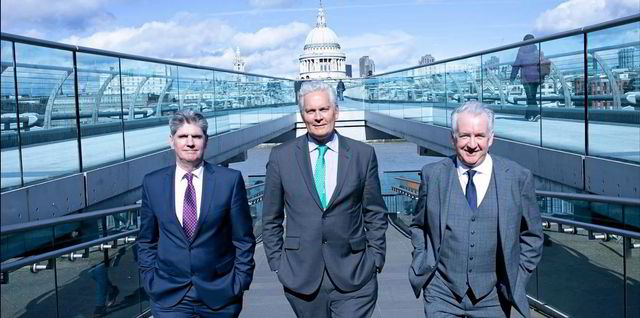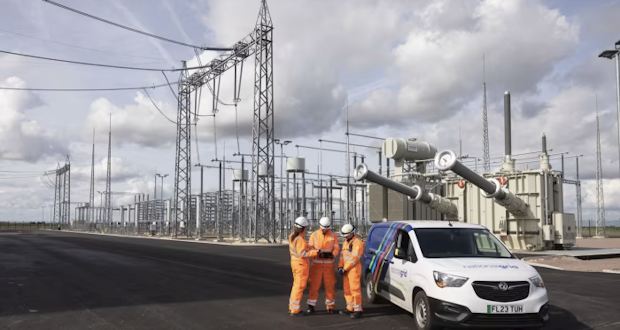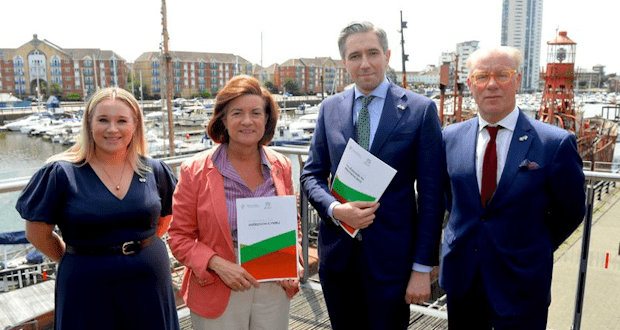Irish utility ESB is taking first steps in exploring the potential for industrial-scale storage of green hydrogen in vast, emptied oil & gas structures beneath the seabed offshore, with the signing of a memorandum of understanding (MoU) with subsurface energy asset developer dCarbonX to build first projects.
Under the MoU, ESB and dCarbonX will work together on the full chain of project development, from licensing, environmental studies and site selection, through project sanctioning, to offshore infrastructure development, commissioning and operations, for schemes in areas near to the utility’s “existing and planned future infrastructure”.
The tie-up also has an eye on a proposed ‘green hydrogen valley’ megaproject centred around the Poolbeg peninsula in Dublin, which would be an integrated green hydrogen production and storage complex that can be used to decarbonise heavy transport, shipping, industry and power generation.
“ESB recognises that hydrogen produced from renewable electricity will play a significant role in the decarbonisation of many sectors,” said Padraig O’Hiceadha, ESB’s strategy lead on generation and trading.
“To that end, we plan to use our existing capabilities and future renewable growth to become a leading player in large scale renewable hydrogen production, thereby enabling renewable electricity, in the form of electrons or green molecules, to meet the energy requirements of Ireland’s future zero-carbon economy.”
Plans for seawind-powered hydrogen production projects are on a rocket, given the neat industrial match between offshore wind’s power profile and electrolysis’ energy demands, but it has particular potential for Ireland, where the country could capitalise on a wind resource ‘surplus’ to domestic demand and transformed into a mix electricity and hydrogen for onward transport to international markets.
Tony O’Reilly, dCarbonX’s CEO, said: “The large-scale underground storage of green hydrogen is the critical element to Ireland fully exploiting its significant indigenous wind energy resources both for domestic consumption and overseas export.
“Our partnership with ESB leverages on our core subsurface capabilities, offshore operating expertise and project management skills to deliver the required subsurface energy storage solutions. This [is a] significant energy transition project which is of Irish and European strategic importance.”
Large-scale storage of green hydrogen is seen by dCarbonX, which was formed by three former oil & gas subsurface engineers, as a “cornerstone of future low carbon, resilient and reliable energy sectors”.
The company’s so-called ‘Arc’ (avoid, reduce, capture) decarbonisation solution works on the principle of first enabling green hydrogen and geothermal power production using subsea energy storage, while at the same time capturing and sequestering CO2 from existing fossil-fuelled industrial operations.
Speaking to Recharge recently, O’Reilly said dCarbonX aimed to build up a subsurface asset portfolio that would be able to store some 11TWh of hydrogen, 8 million tonnes of CO2 and “a range of geothermal-to-power/heat projects”.
“Storing green hydrogen at scale in subsurface offshore caverns is a safe and cost-effective solution, enabling the large-scale deployment of intermittent renewable energy whilst also improving national security of supply and reducing system energy losses,” said the company in a statement announcing the launch of the ESB project.
Last month dCarbonX inked a strategic deal with contractor CGG to work a coming pipeline of clean energy projects off Ireland and the UK, including geothermal energy and storage sites for CO2, hydrogen and ammonia.
ESB has recently launched a plan to transform Ireland’s only coal-fired power station into a green energy hub, featuring a giant power management station, deep-water construction facility and hydrogen storage complex, all linked to a 1.4GW floating wind plant off the west coast of the country in the Atlantic Ocean.
Original article: https://www.rechargenews.com/energy-transition/offshore-oil-vet-spin-out-gasses-up-irish-utility-esbs-hydrogen-fuelled-decarbonisation-plans/2-1-1016396



